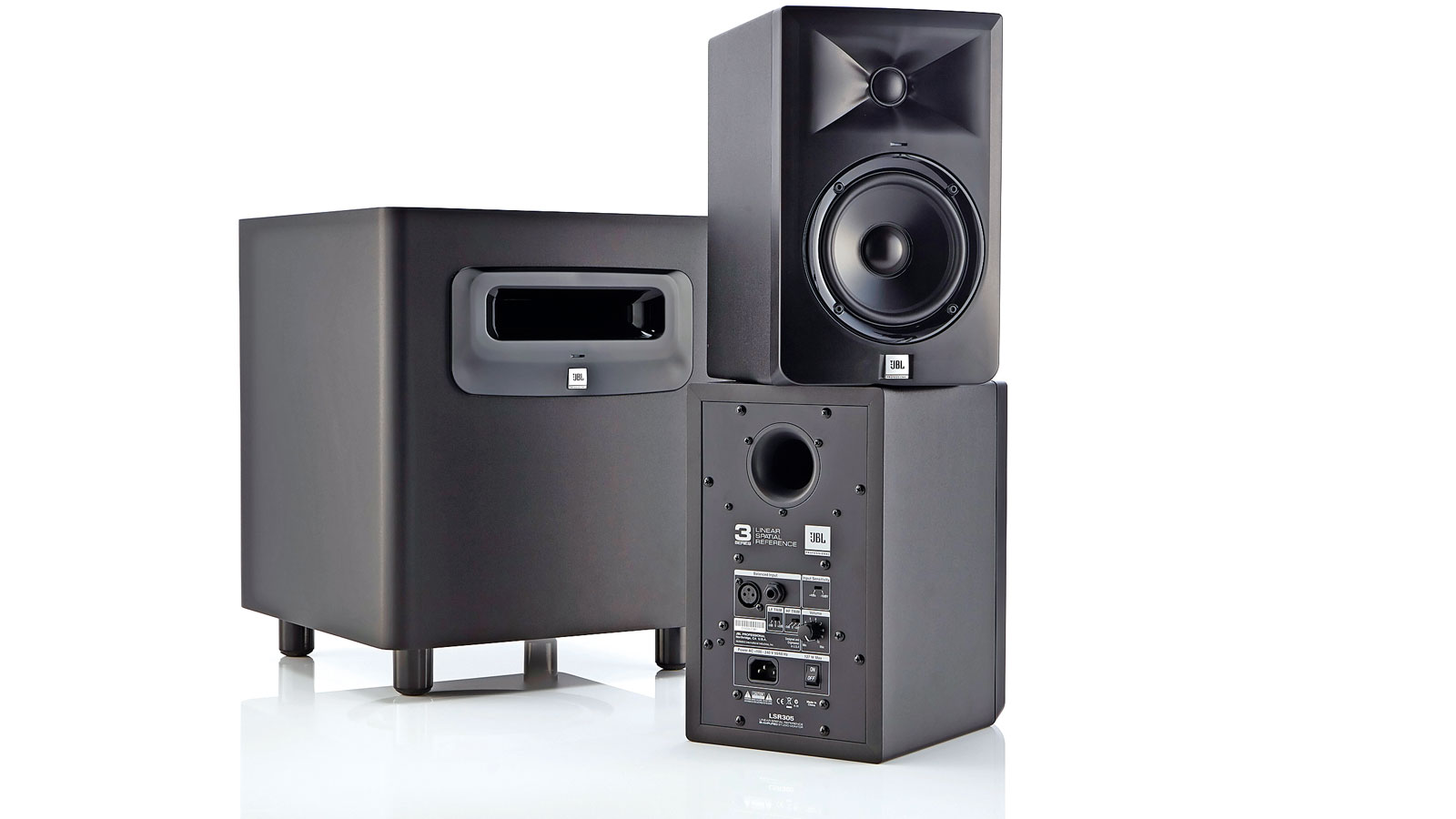MusicRadar Verdict
One of the best compact nearfield monitors on the market, and blends seamlessly with the subwoofer.
Pros
- +
Well-balanced sound. Good imaging. Blends seamlessly with the subwoofer for a complete system.
Cons
- -
Hard to fault at this price.
MusicRadar's got your back
Few manufacturers have JBL's long pedigree in the speaker business, so when it brings out a new series it's definitely time to sit up and listen. The 3 Series currently encompasses two sizes of powered monitors - there's the LSR308 (£219) with an 8-inch woofer; and the smaller LSR305 with a 5-inch woofer, which we are taking a look at alongside the matching LSR310S subwoofer.
Nice and compact for nearfield use, the LSR305s look a little different from the usual compact monitor in that the upper portion of the cabinet houses the rectangular Image Control Waveguide (developed for JBL's new flagship M2 Master Reference Monitor).
This sits around the 1-inch soft dome tweeter and is designed to control the sound emanating from the speaker in the vertical and horizontal planes, ensuring neutral and accurate sound at the listening position. A 5-inch woofer takes care of the bass in cahoots with a Slip Stream low-frequency port situated on the rear of the cabinet.
JBL say that its double-flared shape is precisely engineered for greater low-frequency extension and reduced turbulence.
You can connect to the LSR305 via an XLR or a TRS jack socket and have a choice of -10dB/+4 dB operation. For placement issues, or for your own taste, you can tailor the monitor's response with a couple of rear panel switches that offer a practical cut or boost of 2dB in both the high and low frequencies.
Solid sounds
"There's a wide sweet spot so you can move around in the sound field without losing focus"
Delivering a punchy sound at sensible listening levels that didn't make us feel the need to turn up the wick, the LSR305s sounded nicely balanced on a range of different material, with really good stereo left to right imaging and depth of field and a wide sweet spot so you can move around in the sound field without losing focus. We were impressed by the amount of detail in the mix with solid uncluttered mid-range and a top-end that offered silvery clarity without being overly shrill.
You wouldn't expect huge bass from a monitor with a 5-inch woofer, but the bottom-end is well-represented as the rear port does its stuff and well in proportion with the overall range of frequencies. Sensibly positioned (ie far enough from the wall), the bass seemed tight and controlled and accurate enough to make valid mixing choices.
Want all the hottest music and gear news, reviews, deals, features and more, direct to your inbox? Sign up here.
However, those wanting an extended bass response can add the LSR310S powered studio subwoofer which is optimised for use with 3 Series studio monitors. 200 watts of power drive a 10-inch woofer that offers low- frequency response below 27Hz and has a trick up its sleeve in the form of a selectable XLF Extended Low Frequency setting, designed by JBL especially for dance music producers.
The more conventional option is the 80Hz setting which JBL say implements high and low-pass filters to create a seamless blend of the LSR310S and LSR305. The XLF option, they say, is designed to emulate the augmented low-frequency response heard in the dance club environment by activating a 120Hz High Pass Filter in conjunction with a low-frequency tuning.
We tried out both options and found the 80Hz setting offered the most natural experience with a credible balance that worked well with a range of music, offering plenty of heft for kick drums. The XLF setting is a more specialised choice but dance music producers looking to get a vibe going in the room may just love it.
Excellent compact nearfield monitors for their price, the LSR305s are a good buy and slot together really well with the subwoofer to create a system that will let you hear what's going on in the mix and feel it too.
Trevor Curwen has played guitar for several decades – he's also mimed it on the UK's Top of the Pops. Much of his working life, though, has been spent behind the mixing desk, during which time he has built up a solid collection of the guitars, amps and pedals needed to cover just about any studio session. He writes pedal reviews for Guitarist and has contributed to Total Guitar, MusicRadar and Future Music among others.

